
- Home
- Photography Tours
- Diary / Blog
- Galleries
- Foreign Trips
- Tasmania 2016
- NE Queensland 2016
- Western Alps 2016
- NE Spain 2016
- Australia's Wet Tropics 2015
- Australia's Top End 2015
- SW Australia 2015
- Switzerland 2015
- Andalucia 2015
- Belize 2015
- Australia 2014
- Switzerland 2014
- Belize 2014
- Bahama Islands 2014
- Switzerland 2013
- Ecuador 2012-2013
- Florida 2011-2012
- Vancouver Island 2011
- Australia 2010
- Peru 2008
- Bulgaria 2007
- Lesvos 2006
- California 2006
- New Zealand 2005
- Extremadura 2005
- Goa, India 2004
- The Gambia 2003
- About
November 2015
Wet Tropics of Northern Queensland, Australia
Part 9: Granite Gorge
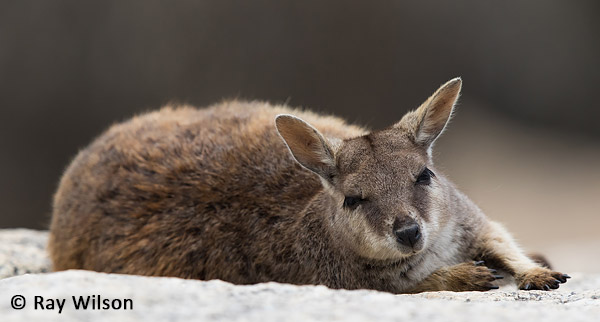
Mareeba Rock Wallaby (Petrogale mareeba)
Granite Gorge is a privately-owned park whose main attraction is its very tame Rock Wallabies.
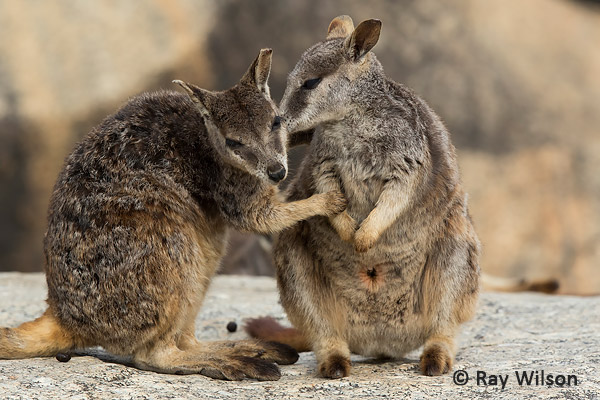
Mareeba Rock Wallaby (Petrogale mareeba)
Unlike most macropods, Rock Wallabies form pair-bonds that can last as long as 4 years and frequent bouts of mutual grooming help to strengthen the pair-bond.
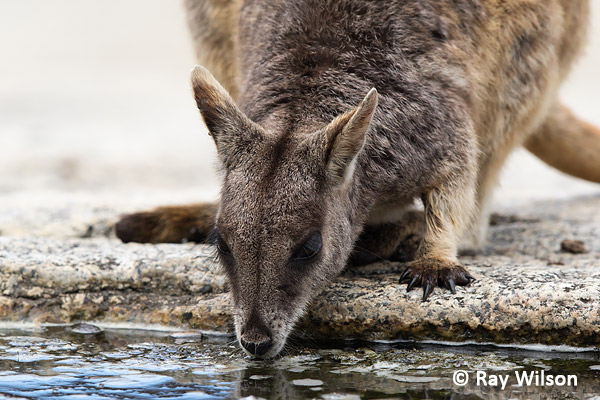
Mareeba Rock Wallaby (Petrogale mareeba)
As their name suggests, Rock Wallabies live in rocky habitats and their agility among the boulders is astounding, having no problem with scaling near vertical cliffs and sloping tree trunks.
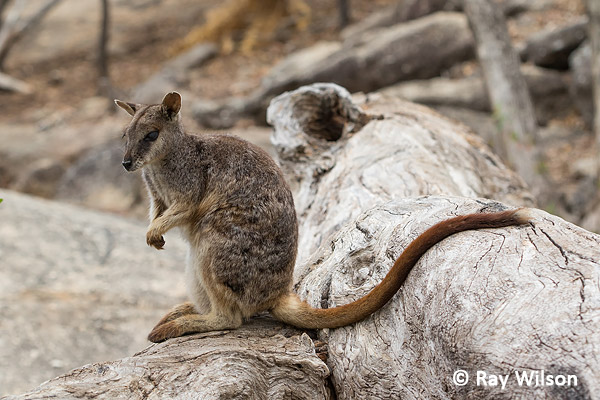
Mareeba Rock Wallaby (Petrogale mareeba)
Their long tail is less thickened at the base than in other wallabies and kangaroos and it is used more for balance than support.
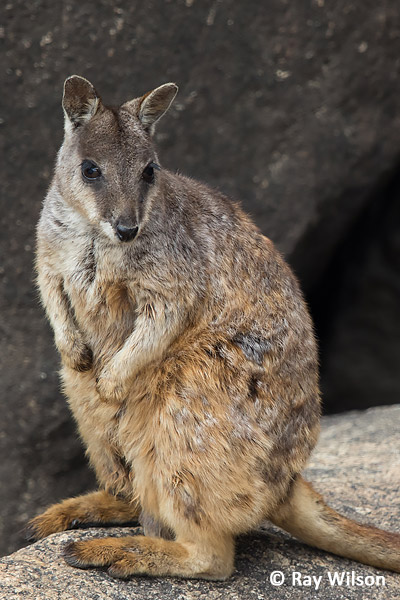
|
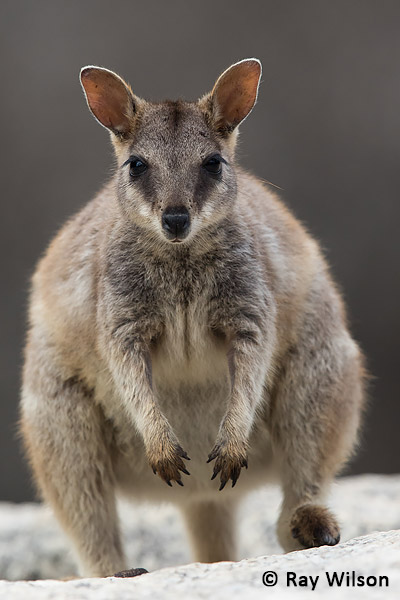
|
Mareeba Rock Wallaby (Petrogale mareeba)
Rock Wallabies are usually mostly nocturnal but the population at Granite Gorge are active throughout the day to take advantage of the tourists who feed them with food pellets supplied at the reception centre.
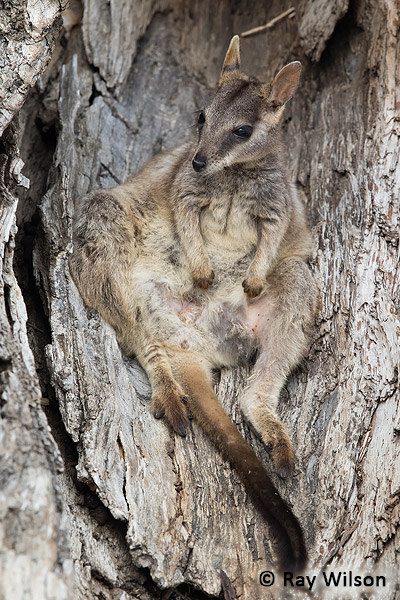
|
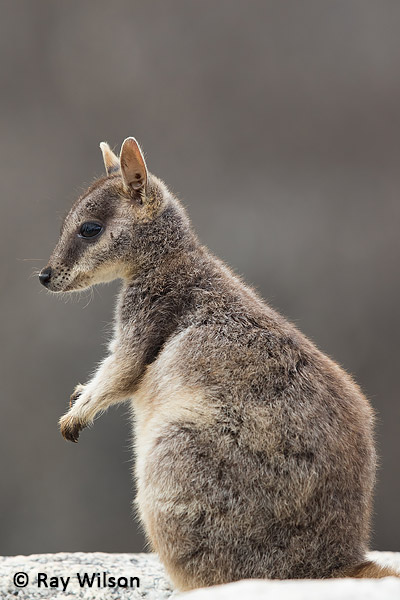
|
Mareeba Rock Wallaby (Petrogale mareeba)
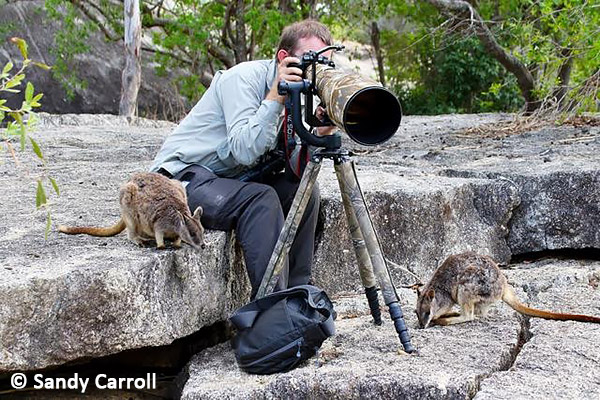
I'm photographing the Squatter Pigeons here. Sometimes you've just got to ignore animals that get too close...
At Granite Gorge, Squatter Pigeons are almost as tame as the wallabies and will often come very close to where you are sitting.
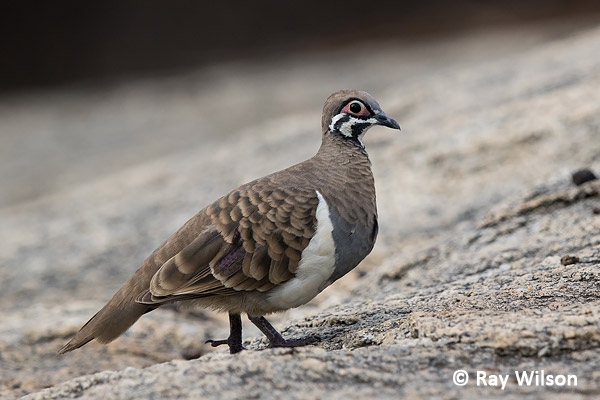
Squatter Pigeon (Geophaps scripta)
Squatter Pigeon is an uncommon pigeon that is found in a range of drier woodlands and grassy habitats away from the high-rainfall areas, but they usually never stray far from a water source.
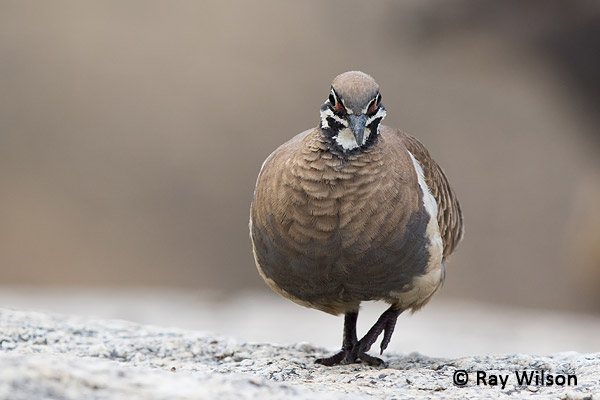
Squatter Pigeon (Geophaps scripta)
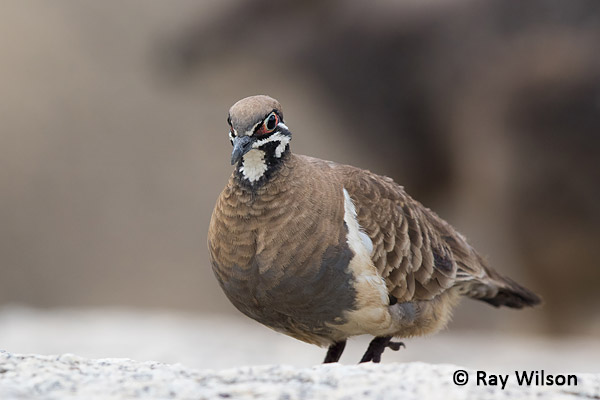
Squatter Pigeon (Geophaps scripta)
There are several active bowers of the Great Bowerbird in the reserve. These beautifully constructed, woven structures are usually decorated with carefully arranged piles of white plastic and other white objects the bird has collected from the surrounding area or stolen from another bowerbird's bower. The bower acts as a display arena and its sole purpose is to attract females. Once mating has occurred the female will depart, build her nest and raise the young on her own.
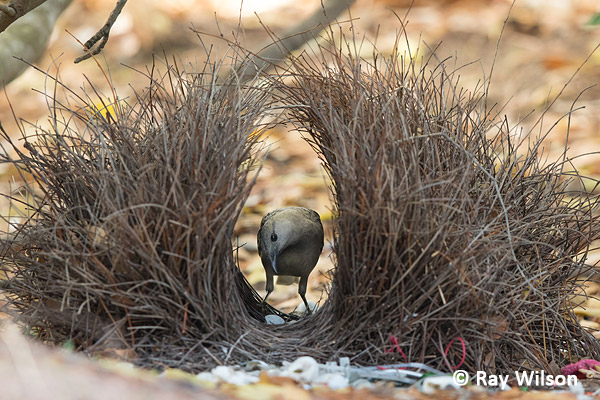
Great Bowerbird (Chlamydera nuchalis) tending to his bower
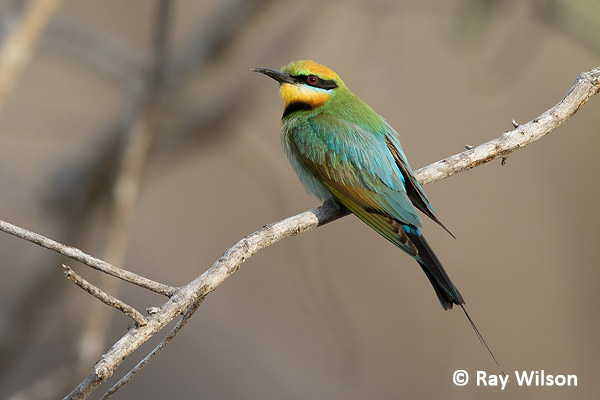
Rainbow Bee-eater (Merops ornatus)
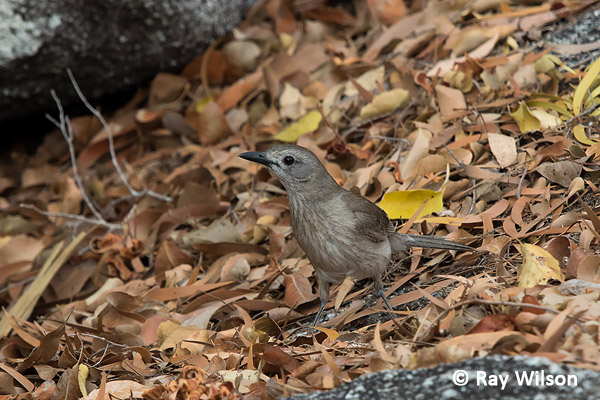
Grey Shrike-thrush (Colluricincla harmonica)
If you take the walk up to the "dinosaur footprints" be prepared for some major scrambling as it involves some serious rock-hopping! After having made the effort myself, I am not sure it was worth it as I seriously doubt the authenticity of these "footprints". I'm not an expert but to my untrained eye they just looked like erosion hollows.
Since getting home I have done several web searches and have so far been unable to find a single mention of these "footprints" from any reputable sources.
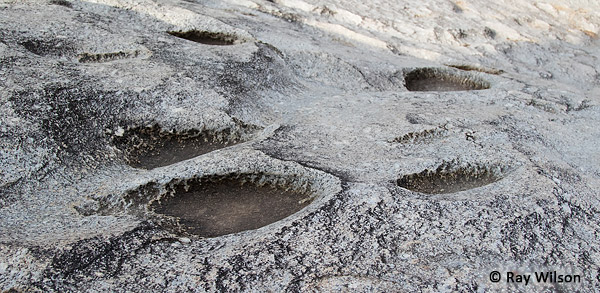
"Dinosaur footprints"
Ray Wilson owns the copyright of all images on this site.
They may not be used or copied in any form without prior written permission.
raywilsonphotography@googlemail.com